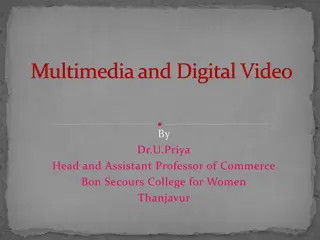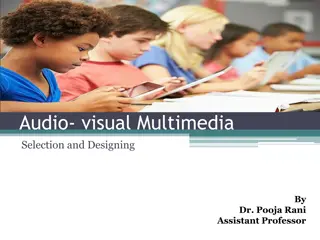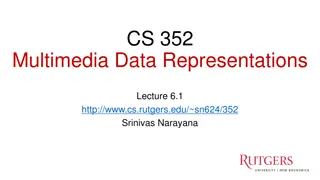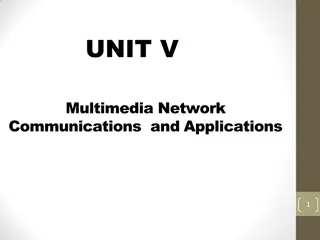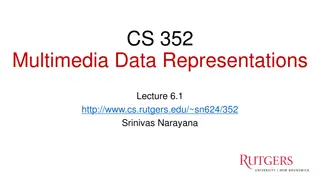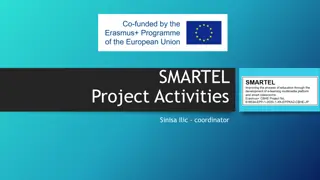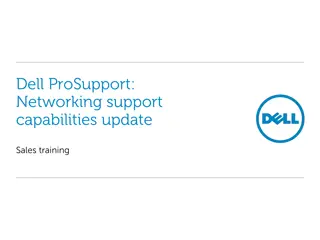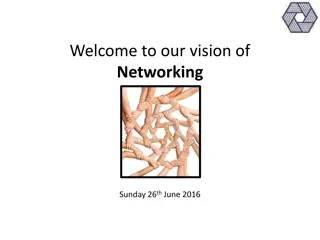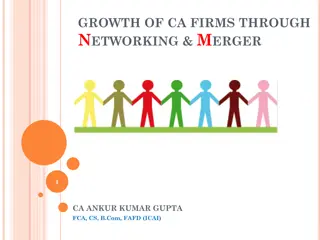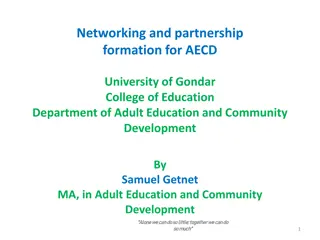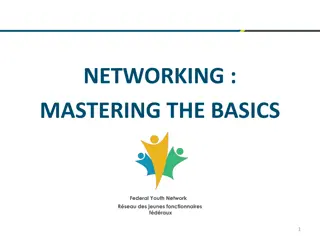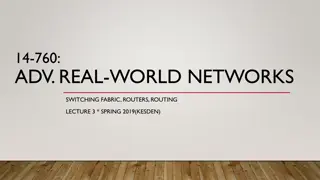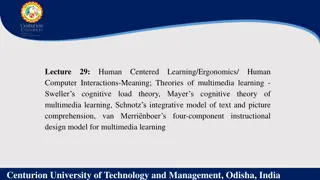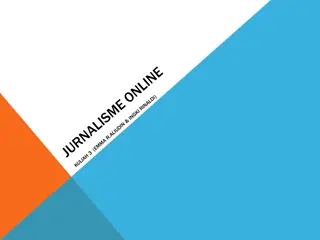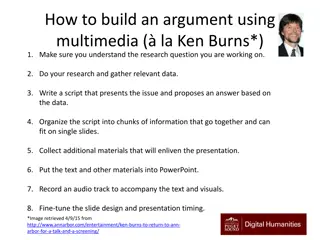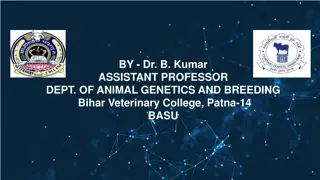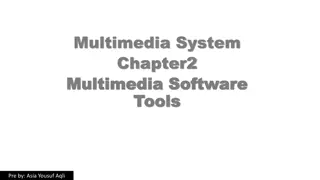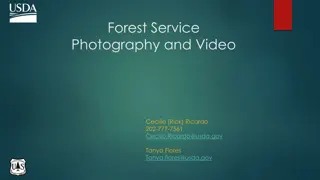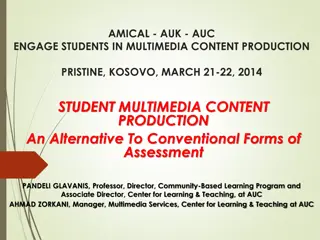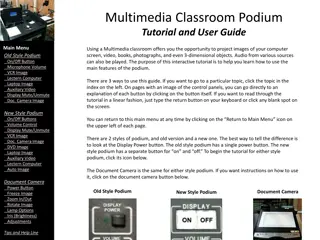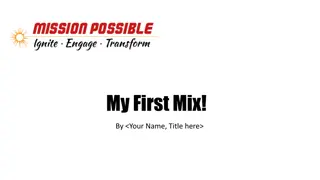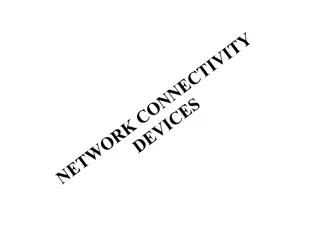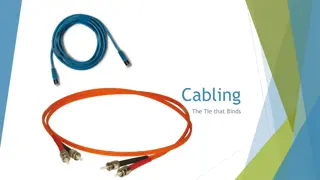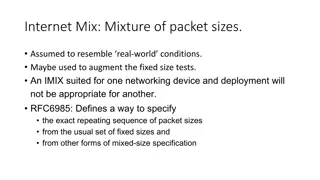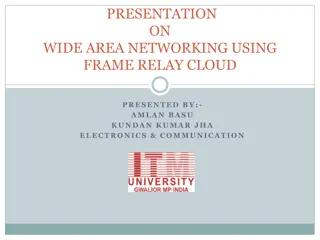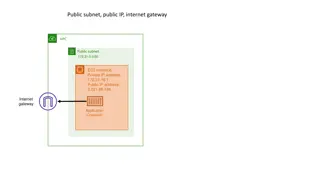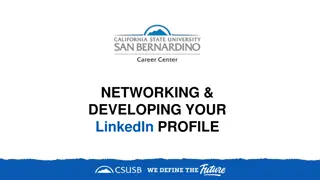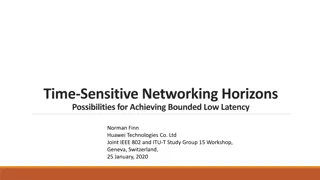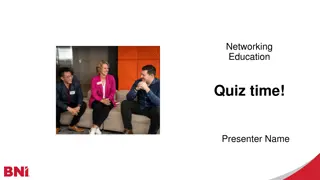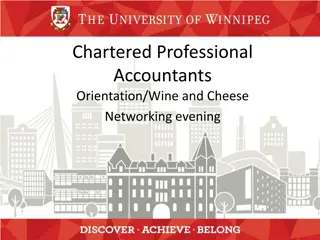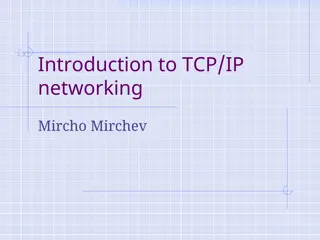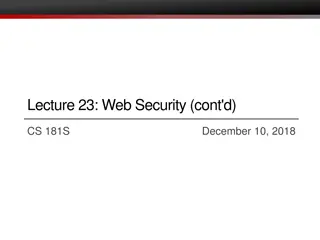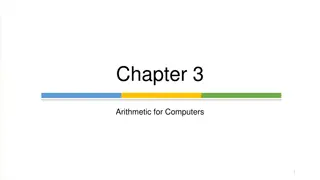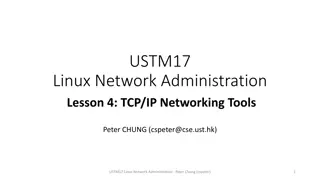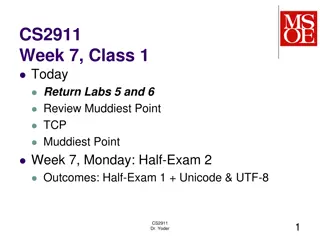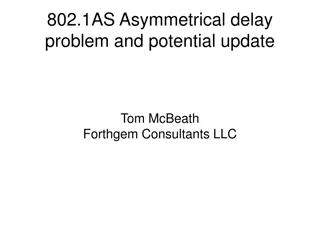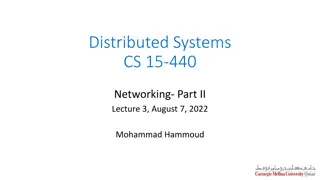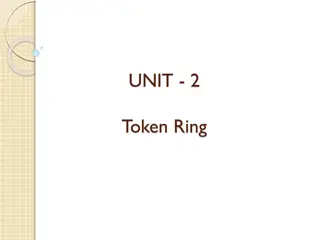Understanding Multimedia Networking Fundamentals
Explore key concepts in multimedia networking including digital audio and video, energy analysis, IMN and IMX computations, transport protocols, buffering, Skype network architecture, QoS in multimedia applications, and HTTP streaming for video delivery.
Download Presentation

Please find below an Image/Link to download the presentation.
The content on the website is provided AS IS for your information and personal use only. It may not be sold, licensed, or shared on other websites without obtaining consent from the author. Download presentation by click this link. If you encounter any issues during the download, it is possible that the publisher has removed the file from their server.
E N D
Presentation Transcript
CS 529 Multimedia Networking Review
Digital Audio What is the tradeoff between sample size and fidelity? Between sample rate and fidelity? What uses of computer audio require a high sample rate and large sample size? Which do not? Why? a
Digital Audio What are the sample rate and sample sizes for typical voice-quality audio? If typical encoding captures a wave form as it is , what does MP3 attempt to do? And how? a
[RS75] What is energy? What is the zero crossing rate? More importantly how are they used? why are they used?
[RS75] What is IMN? How computed? What is IMX? How computed?
Digital Video What are typical frame rates for videos? What are some common resolutions for videos (e.g., HD)? How many bits are needed for true color images?
QoS and Multimedia Applications Rank sensitivity (low, medium, high) for Conversational Voice and Delay Streaming Video and Delay Conversational Voice and Capacity Streaming Video and Capacity
Transport Protocols One reason TCP is good for multimedia applications? Example? One reason TCP is bad for multimedia applications? Example? One reason UDP is good for multimedia applications? Example? One reason UDP is bad for multimedia applications? Example?
Buffering What is a playout buffer? What is it used for? How big is it?
Skype What is the network architecture used for Skype? What kinds of nodes are there? How are the nodes connected? Why are they connected this way?
HTTP Streaming How does HTTP work for streaming video? Where is the intelligence in an HTTP streaming system?
Multimedia Quality Assessment Broadly, what are two types of methods to assess multimedia performance? What is an example of each method for assessing voice quality?
Experiments in CS What are the main steps in the scientific process? Provide a Hypothesis for something in Multimedia Networking How would you test it?
NetFlix Why isn t frame loss a component of video quality for NetFlix? What are the components of NetFlix video quality?
RTP What is it? Can I use it instead of TCP/UDP? What are some of RTP s major features?
SIP What is it? What services does it provide? Registrar? Proxy? How does it allow for a mobile caller?
Network Support for Multimedia? What are alternatives to best effort ? What is a challenge to guaranteed QoS?
Video Compression How is it similar to image compression? How is it different? MPEG What is a GoP?
[WS00] What is at least one implicit hypothesis the researchers test? How are subjective audio quality ratings provided? How are objective audio quality costs gathered?
[WS00] What is at least one implicit hypothesis the researchers test? What are some of the independent variables? What tool do the researchers use to test audio?
[WS00] Provide order, best to worst Quiet one recorded low volume, other norm Bad mic one had low quality mic, other norm 5% loss both voices, with repetition Loud one recorded high volume, other norm 20% loss both voices, with repetition Echo one had open mic, no headset Reference non-degraded
[HHH+12] Why is commercial streaming over HTTP confused? Why is commercial streaming over HTTP timid?
[RBV+12] Which is best? What else should be considered?
[LG14] For video messaging on smartphones, what are two main factors affect transmission speed? What are some suggested improvements by the authors?
[LG14] For video messaging on smartphones, what are two main factors affect transmission speed? Answer: file size and location What are some suggested improvements by the authors? Answer: Compress/transcode and distribute images among servers in cloud
[SKH02] What are the 3 fundamental limitations faced by MCGs?
[SKH02] What is the tension/tradeoff between responsiveness and consistency in MCGs? What is interest management? Describe how it works What is dead reckoning? Describe how it works
[SJNC13] What are the benefits of using cloud gaming instead of traditional gaming? What are the challenges?
[CFGS14] What are the main messages from the graph based on [CFGS14]?
[CFGS14] Order these from least downstream bitrate to most: Thin game Live video Pre-recorded video Traditional game Virtual environment What are the approximate bitrates for each?
[CFGS14] Turbulence Summary
[SJ95] What is the E-Policy? What is the I-Policy? When, in general, is the E-Policy good? When, in general, is the I-Policy good? What is a talkspurt?
[SJ95] How does QM-120 work? What is QM-(600,2)? What is the motivation behind it? Describe one item of future work. Why is it of interest? Briefly, how would you approach doing it?
[WCCL09] What are the challenges proposed by the paper? Hint: it considers buffer sizes What have the academics done about the challenges?
[WCCL09] Briefly describe the methodology the author uses to determine the optimal buffer size
[WCCL09] Briefly describe the methodology the author uses to determine the optimal buffer size Ans: 1. Encode audio samples 2. Simulate loss 3. Add delay, dropping if needed 4. Decode 5. Apply QoE measure PESQ + E-model 6. Repeat 1-5 for all buffer sizes, with highest QoE being optimal
[WCCL09] Interpret the above graph What are the main messages?
[PHH98] What are the client loss characteristics of the Mbone (and other P2P networks)? Why can TCP and retransmissions be used to repair loss in the Mbone?
[PHH98] What is forward error correction (FEC)? What are the two categories of FEC described by the authors? What are the main advantages and disadvantages of each?
[PHH98] Broadly, what are receiver based repair techniques? Why are they often called error concealment? What is a recommended repair technique for a non-interactive, multicast multimedia session? Why?
[HCH09] 10% 9% 8% 7% 6% 5% 4% 3% 2% 1% 0% 0% Significance of picture for Skype?
[HCH09] What s is the optimal redundancy ratio for repair as defined by the authors?
[HCH09] What s is the optimal redundancy ratio for repair as defined by the authors? Ans: Minimum amount of redundancy data needed to sustain same audio quality under different network conditions
[HCH09] How did the author s generate this graph? How to read it?
[HKBT01] What alternate service does ABE offer? What is green traffic? What is blue traffic?
[HKBT01] What does it mean to say Green does not hurt Blue ? Based on below formula, what happens if green cuts in line? How do you fix it?
[HKBT01] Using DSD, what is the order of the next 3 packets?
[HKBT01] What is the significance of this graph?
[LCK10] What general property about network bitrates and latency sensitivity does CHAP rely upon? What are credits as assigned by CHAP? How are they assigned? How are they spent ?
[LCK10] 1.0 0.5 0.0 0 100 200 Server Ping (ms) 300 400 500 600 FIFO (only qstat) FIFO (qstat + 1 HTTP downloads) Interpret the above graph What are the messages for CHAP?



